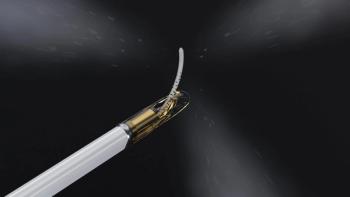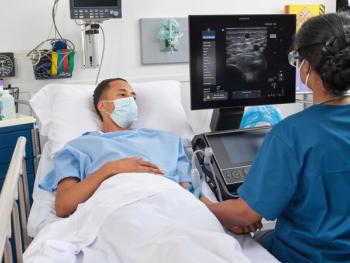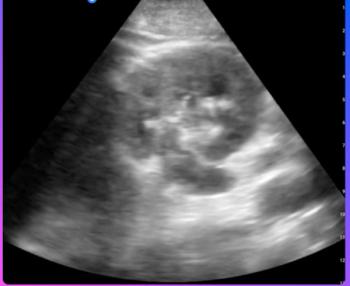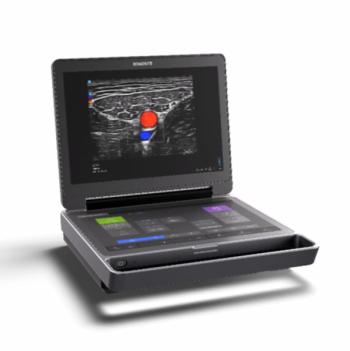
Ultrasound predicts outcome just two days after cancer treatment
Contrast-enhanced ultrasound exams detecting residual tumor blood flow can accurately predict how effective transarterial chemoembolization is in the treatment of hepatocellular carcinoma. The study had no false-negative results, and the one false positive came from an exam administered just one day after treatment. Ultrasound exams administered from two days to one month after treatment provided treatment results usually available only after three months using CT or MRI.
Contrast-enhanced ultrasound exams detecting residual tumor blood flow can accurately predict how effective transarterial chemoembolization is in the treatment of hepatocellular carcinoma. The study had no false-negative results, and the one false positive came from an exam administered just one day after treatment. Ultrasound exams administered from two days to one month after treatment provided treatment results usually available only after three months using CT or MRI.
Dr. Yuko Kono of the radiology department at the University of California, San Diego and colleagues published the study in the Journal of Vascular and Interventional Radiology in January 2007. They used contrast-enhanced ultrasound on 33 patients to detect blood flow in a total of 42 tumors.
Experienced radiologists performed phase-inversion low-mechanical-index real-time and intermittent imaging after injecting 0.5 to 2 mL contrast medium. They were blinded to all other imaging findings. Twenty-nine exams were performed within two weeks of transarterial chemoembolization, and the rest were performed within one month.
The results of the ultrasound exams were later compared with established methods of determining the efficacy of treatment. A total of nine tumors were dropped from the study because final outcome of treatment was not available, either because patients were lost to follow-up or they died without autopsy. Three more tumors were re-treated before final outcome of the first treatment was established.
This left a total of 33 tumors in the study. Histology determined the effectiveness of treatment on nine of these tumors, angiograms provided results for 14 tumors, and tumor growth was sufficient indication for two more. CT and MRI studies more than six months after treatment provided results for eight tumors.
All but one contrast-enhanced ultrasound exam matched the results of more established methods for determining effectiveness of treatment, but ultrasound provided those results more quickly. The one false-positive result was from an exam given within 24 hours of transarterial chemoembolization.
Newsletter
Stay at the forefront of radiology with the Diagnostic Imaging newsletter, delivering the latest news, clinical insights, and imaging advancements for today’s radiologists.




























